ART & DESIGN
Suzanne Opton, American (b. 1950). American Soldier Birkholz: 353 Days in Iraq, 205 Days in Afghanistan, 2004. Inkjet print (printed 2010), 41 1/2 x 51 3/4 inches. The Nelson-Atkins Museum of Art
ART REVIEW
American Soldier at The Nelson-Atkins Museum of Art reveals the emotional and psychological impact of war on veterans
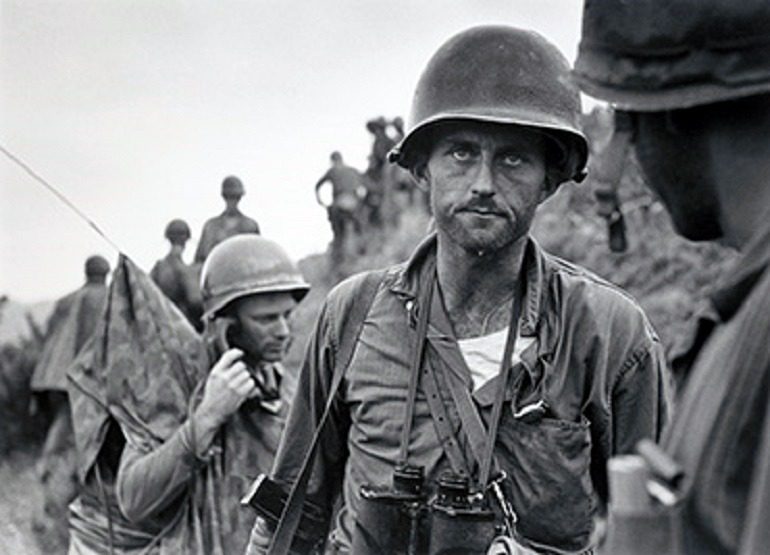
David Douglas Duncan, American (b. 1916). Marine Capt. Ike Fenton, Naktong River Permieter, No-Name Ridge, South Korea, 1950. Gelatin silver print (probably printed 1970s), 9 11/16 x 13 7/16 inches. The Nelson-Atkins Museum of Art, Kansas City
BY KAZAD
KANSAS CITY, MO. – American Soldier, a photography exhibition presently at The Nelson-Atkins Museum of Art in Kansas City, brings into focus the experience of servicemen and women from the Army, Navy, Marines, and Air Force. Featuring more than 50 photographs, each image provides an insight into the grueling effects of war on veterans. From the Civil war era to recent wars in Iraq and Afghanistan, the photographs convey the brutality of war and the consequences of Post-Traumatic Stress Disorder (PTSD) on servicemen and women who fought in these wars.
Brave American Soldier Images
The images of American soldiers in The Nelson-Atkins Museum of Art leave no one in doubt about the debilitating consequences of war. From body language to facial expressions and gestures of the subjects captured in the war photographs, pain surges, filling the human soul. Even when the image is that of loved ones saying goodbye or welcome home, strained emotions are vivid. The raw emotions displayed by the subjects represented in the photographs bring to light a deeper understanding of the indescribable physical and mental wounds of war. “These powerful photographs convey emotion and information simultaneously,” said Julián Zugazagoitia, Menefee D. and Mary Louise Blackwell CEO & Director of the Nelson-Atkins.
Curated by April M. Watson, the curatorial instinct for the show came from research for another exhibition. In her research, Watson discovered that “several contemporary photographers are making poignant and somewhat unusual portraits of American servicemen and women.” The quest to unravel the war experiences of those American soldiers and the never-ending consequence of war led to American Soldiers. She notes:
These photographs are complex in their portrayals: the subjects suggest vulnerability, fear and loss as well as heroism and strength. Since we have in our permanent collection many iconic images—from the Civil War, World War II, and the Korean War—I thought a show that included these historical photographs, as well as contemporary works, might create a fresh, interesting dialogue about the way photographs over time have shaped our perceptions of military personnel and the cultural values they are seen to embody.
Although taken by photojournalists, official military photographers, artists, and documentary photographers for different purposes, the images in American Soldiers all have a common thread of the emotional and psychological impact of war. One of the very disturbing images in this show is by Suzanne Opton, American (b. 1950). Titled The Soldier Birkholz: 353 Days in Iraq, 205 Days in Afghanistan, 2004, the image reveals the devastating consequence of unending war deployment. This photograph, evidently, is the image of a war-weary American soldier. Dominating the photograph is the portrait of a soldier in a state of inertia. With sunken eyes and a face drained of blood and verve, this haunting image will break even the hearts of stone. After years of wars and unending deployment in Iraq and Afghanistan, Soldier Birkholz, who had been in the theatre of war for almost 2 years, appears caught in the space between life and death.
The bravery of the men and women represented in these images is not in doubt. In some of the photographs, the courage of the men and women shine through. In Operation Prairie, Vietnam by Larry Burrows, viewers are presented with the courage of two warriors, who though bear witness to the tragedy of war carry on courageousness. Judith Joy Ross’s photography titled P.F.C. Maria I. Leon, U.S. Army Reserve, On Red Alert, Gulf War, 1990, extends the conversation of courage. P.F.C. Maria I piercing gaze at the viewer shows she was ready for the ultimate sacrifice. While the images of these brave men and women show fear, vulnerability, and a sense of loss, they also show heroism and strength.
Toby Keith: American Soldier Song
In Toby Keith’s American Soldier song, the celebrated country musician touched on the sacrifice of American Soldiers like P.F.C. Maria I who, in spite of the dangers associated with war, remained devoted to fighting and giving their lives for their country. The driving force to confront danger in war zones, as the American Soldier lyrics notes, is not money or glory but the need to do the right thing.
That exceptional valor to do the right thing is revealed in the photograph by David Douglas Duncan, American (b. 1916), which captures Marine Capt. Ike Fenton while at the Naktong River Perimeter, No-Name Ridge, South Korea. Taken in 1950, the image shows Marine Capt. Ike Fenton in the trenches dressed in his tattered army uniform. Around his neck is a telescope. Capt. Ike Fenton’s facial expression shows great fatigue, strains of war, and stress. From his gaunt and disheveled appearance, it is clear that this soldier has seen strange things. Although Capt. Ike Fenton looks calm, there is no doubt that this is a tense situation. Behind the Captain is his radioman and in front of him another soldier with whom he is in conversation. There is pressure written all over this image, yet, the men are calm.
ART REVIEW| READ ALSO: War Photography Exposes Impact of Armed Conflict and Aftermath
Looking at the images of the servicemen and women, it is bewildering that counties still send their men and women to war without adequately thinking about the long-term consequences of war. Although the photographs capture wars from different periods and used in various contexts, the impact of war on those who fought in the wars represented are the same: War is devastating and the mental and physical effect unending. Collectively, the photographs in American Soldier are valuable reminders that the emotional and psychological impact of war can be everlasting.
The images of American soldiers rekindle some of the issues that have plagued American Sniper since it opened. Since the movie was released, it has become a major point of controversy. Beyond highlighting the gruesome effects of war, the movie also underscores the struggles of veterans of these wars. From Post-Traumatic Stress Disorder (PTSD) to mental issues and suicides, American war veterans have a long painful history. Across the country, so many homeless veterans carry with them the burden of their war experiences. American Soldier at The Nelson-Atkins Museum of Art extends the discussions about the impact of war on servicemen and women. In addition to emphasizing the horrid effects of war from the Civil War era to the recent conflict in Iraq and Afghanistan, the show also reveals the consequences of war on veterans.
American Soldier: Images of Hope, Love, and Death
Join the art conversation: Share your thoughts and comments. Add to the story
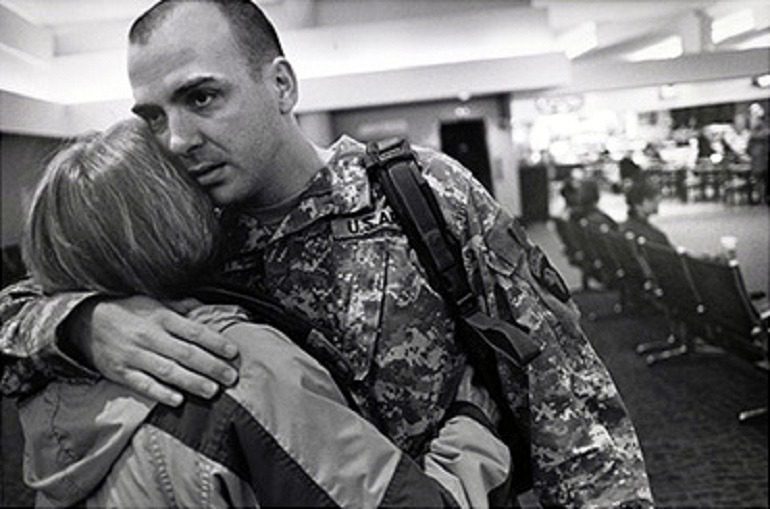
Eugene Richards, American (born 1944). Good-byes at the airport, Columbus, Ohio, 2006. Gelatin silver print, 20 x 24 inches. The Nelson-Atkins Museum of Art, Kansas City, Missouri
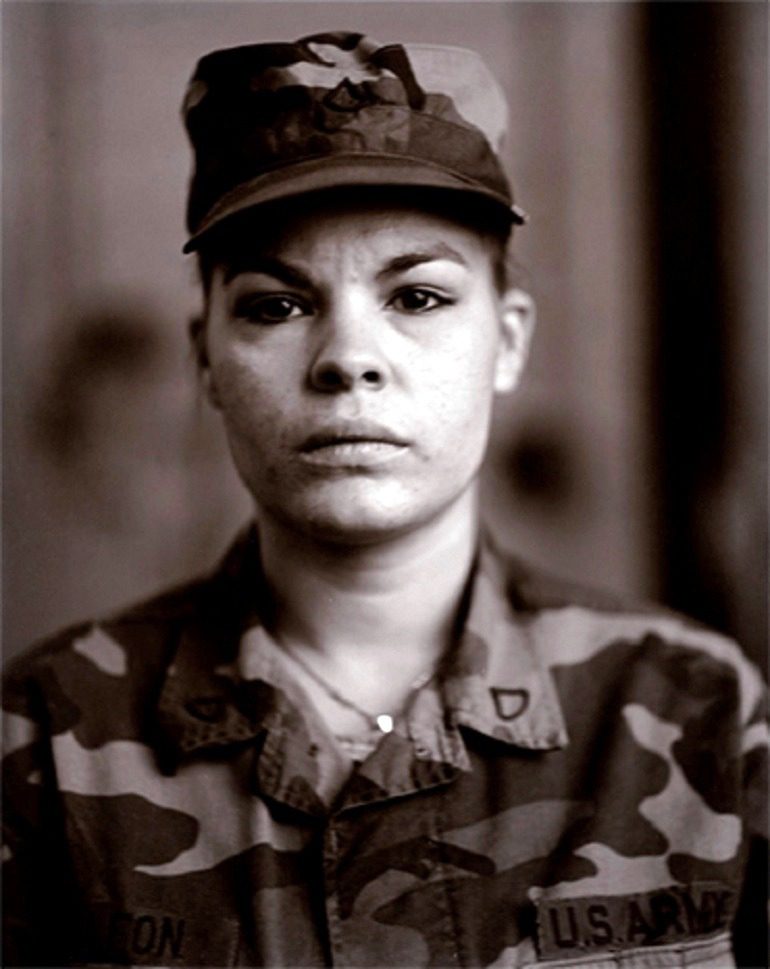
Judith Joy Ross, American (b. 1946). P.F.C. Maria I. Leon, U.S. Army Reserve, On Red Alert, Gulf War, 1990. Gelatin silver print (printed 2006), 9 11/16 x 7 11/16 inches. Image courtesy of The Nelson-Atkins Museum of Art, Kansas City, Missouri

Larry Burrows, English (1926-1971). Operation Prairie, Vietnam, 1966. Dye transfer print, 13 1/8 x 8 11/16 inches. Image courtesy of The Nelson-Atkins Museum of Art, Kansas City, Missouri
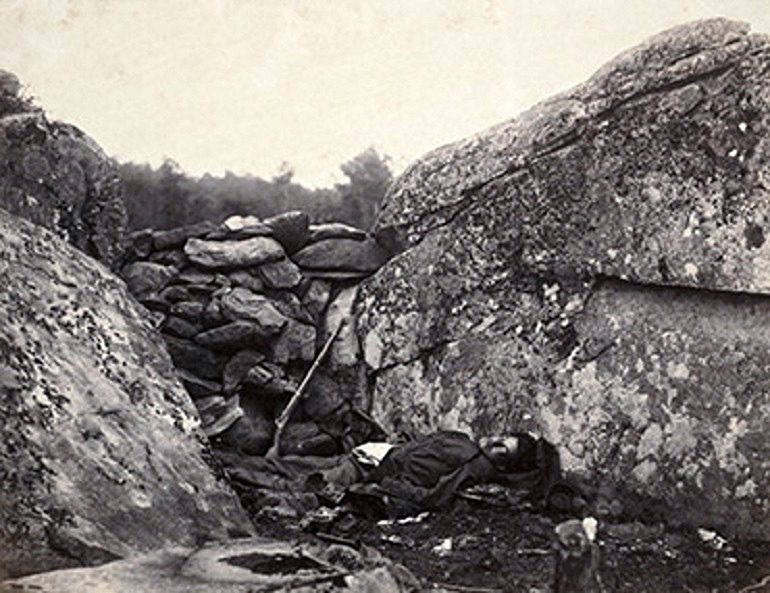
Timothy H. O’Sullivan, American (1842-1882). Home of a Rebel Sharp-Shooter at Battle of Gettysburg, 1863. Albumen print, 6 3/4 x 8 13/16 inches. The Nelson-Atkins Museum of Art, Kansas City, Missouri
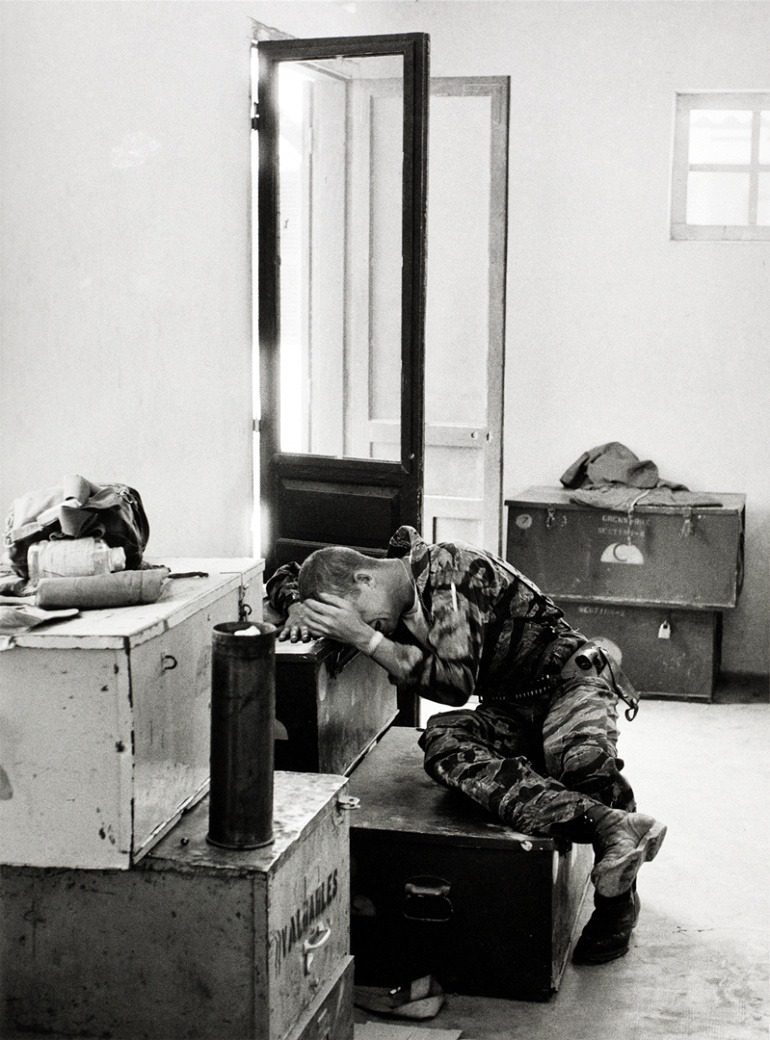
Larry Burrows, English (1926–1971). The mission over, Farley gives way, from Yankee Papa 13, 1965. Gelatin silver print, 10 15/16 x 8 1/8 inches. Image courtesy of The Nelson-Atkins Museum of Art
Join the art conversation: Share your thoughts and comments. Add to the story
American Soldier on view through June 21, 2015, at The Nelson-Atkins Museum of Art, 4525 Oak Street, Kansas City, MO 64111
